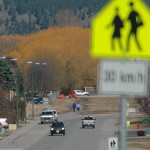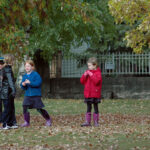Home »

B.C. residents urged to prepare for flood season
British Columbians are urged to take steps to prepare for spring floods to protect their families and property.
A warming trend this week is increasing temperatures to the highest level of the season with the possibility of moderate to heavy rainfall forecast for the weekend.
Environment Canada reports general sogginess for the East Kootenay up to at least Tuesday, June 7. There are no flooding alerts for the region at this time.
The risk of spring flooding is elevated across B.C., particularly in parts of the Interior and the north, due to a significant delay of snowmelt from cooler-than-normal conditions in April and May. Current modelling indicates the risk that flood conditions may emerge over the weekend within watersheds through the Interior and northwest of B.C. Check the River Forecast Centre website for updated advisories and forecasts that show specific areas of heightened flood risk.
British Columbians are urged to follow all directions of local authorities and take steps to prepare for the possibility of flooding, the Ministry of Public Safety and Solicitor General and Emergency Management BC noted in a media release.
The most severe floods in spring and early summer typically occur due to melting snow, rain or a combination of both. Floods can also be caused by storm surges, ice jams or damage to structures like dikes or dams.
Here are some tips to help you and your family prepare for potential flooding:
* Protect your home: prepare for possible flooding of low-lying areas by moving equipment and other objects from these areas to higher ground where possible. Clear your perimeter drains, eavestroughs and gutters. If you think you need sandbags to protect your home, you should contact your local government for more information.
* Create grab-and-go bags: assemble an individual grab-and-go bag for each member of your household with the essentials you will need if you are asked to evacuate.
* Recognize the danger signs: if you live near a waterway, a change in water colour or rapid change in water level (especially a drop) could indicate a problem upstream. Call your local fire, police or public works department immediately if you suspect something out of the ordinary.
If you face a threatening flood situation, park vehicles away from streams and waterways, move electrical appliances to upper floors and make sure to anchor fuel supplies. Listen to local officials if you are asked to evacuate.
In the event of flooding, here are some tips about what to avoid:
* Steer clear of shorelines: keep away from river edges and shorelines. During periods of high flow, river banks may be unstable and more prone to sudden collapse. Stay well away and keep young children and pets away from the banks of fast-flowing streams and flooded areas or bridges.
* Do not drive through flood water: never attempt to drive or walk in flood water. Just 15 centimetres (six inches) of fast-moving water can knock over an adult, while 0.6 metres (two feet) of rushing water can carry away most vehicles, including SUVs and pickup trucks.
* Landslide risk: heavy rain and snowmelt may contribute to landslides and dangerous debris in creeks and waterways. Be safe and do not go down to watch the rushing water. If you notice trees beginning to lean or bend near your home or cracks developing in the hillside, contact local authorities.
If you are placed under evacuation alert for any reason, you should immediately:
* Get prepared to leave your home on short notice.
* Get your grab-and-go bags ready (which should include several days of clothing, toiletries and medications), your emergency plan, copies of important documents (including flood and home insurance) and important mementos.
* Listen to local emergency officials for further information on the situation.
If you are placed under evacuation order for any reason, you must:
* Leave the area immediately.
* Follow the directions of local emergency officials and evacuate using the route(s) they have identified.
* Do not return home until you have been advised that the evacuation order has been rescinded.
More details are available in the PreparedBC Flood Preparedness Guide, which contains useful information to help British Columbians understand what to do if their home or community is at risk of flooding.
Flood Preparedness Guide: www.preparedbc.ca/floods.
Lead image: A young family canoes along a West Fernie roadway during flooding in June 2013. e-KNOW file photo
e-KNOW







